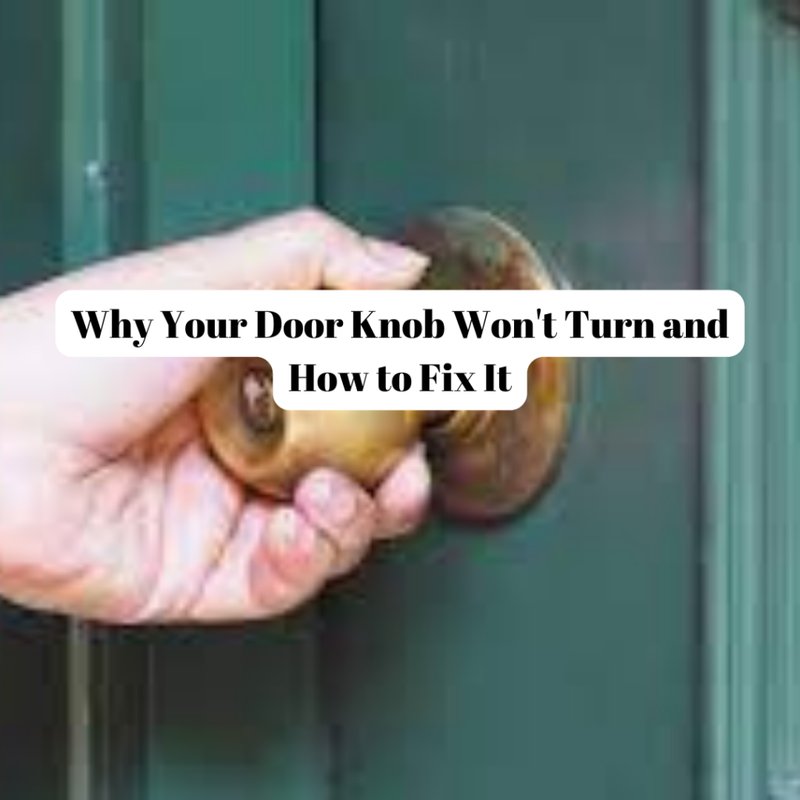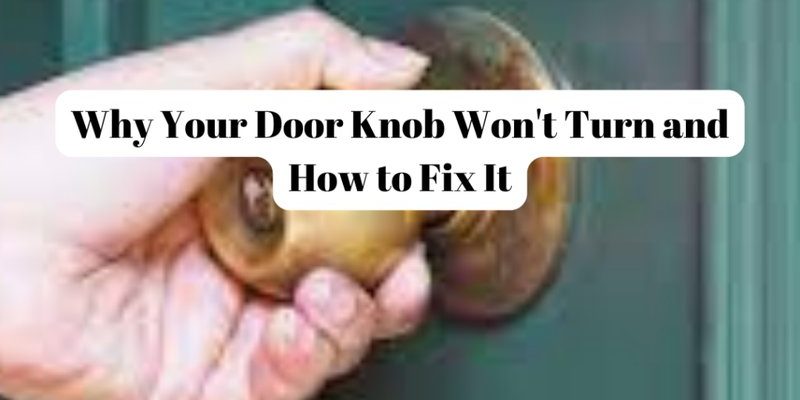
Let me explain: exterior door knobs see a lot of action. They face changing weather, shifting temperatures, and plenty of hands. Over time, even a high-quality brand can start feeling rough. A grinding noise isn’t just annoying—it’s your hardware’s way of waving a little flag, saying, “Hey, something’s not right in here.” But here’s the thing: with a bit of troubleshooting (and maybe a screwdriver or some lubricant), you can usually fix this yourself.
What Causes a Door Knob to Grind?
When your exterior door knob starts grinding, it’s usually not a single thing at fault, but a combination of small wear and tear issues. Most common? Dirt, dust, or debris sneaking inside the mechanism. You might not realize how much grime can build up over months or years—especially if your door faces the street or a busy patio. Dirt acts like sandpaper inside those delicate gears and pins, making every turn feel rough or sticky.
Another big player is lack of lubrication. Just like a squeaky bicycle chain, door knobs need a little help to move smoothly. If the internal parts dry out, metal rubs against metal, causing that grinding sound. Some brands, like Schlage, include sealed mechanisms, but even those can dry up over time, especially in harsh climates.
Finally, there’s mechanical wear. Springs weaken, latches get misaligned, and parts start wobbling out of sync. If you’ve ever felt your door knob get looser or notice it turning without much resistance, that’s a hint that something’s off inside. Sometimes, it’s a combination—grime wears down the parts, lack of oil speeds up the damage, and before you know it, the knob’s grinding every time you use it.
Safety First: Prepping to Fix Your Door Knob
Before you jump into troubleshooting, it helps to get your tools and space ready. Trust me, working on an exterior door knob is way easier if you’re not scrambling for screwdrivers mid-fix. Here’s how I like to prep:
- Gather basic tools: You’ll need a Phillips screwdriver, a flathead screwdriver, and maybe a small brush (an old toothbrush works).
- Pick up lubricant: A can of graphite powder or a silicone-based spray is usually safe for most brands. WD-40 can work short-term but isn’t always ideal for locks long-term.
- Clear the area: Prop open the door so you’re not fighting with it. Lay down a towel or mat to catch any tiny screws. It’s frustrating to have a spring roll away under the porch!
Always check your manufacturer’s guide (like Kwikset or Schlage’s support pages) for any brand-specific advice. Some newer smart locks or high-end sets have extra steps for safe disassembly or battery safety.
Safety-wise, remember: if your knob feels hot, rusted through, or you see signs of forced entry, it’s better to call a pro. Most grinding issues, though? Totally within DIY reach.
Step-by-Step: Diagnosing the Grinding Noise
Let’s get hands-on. When you’re faced with a grinding exterior door knob, go through these steps one by one. Don’t rush—sometimes the answer is simpler than you think!
Step 1: Feel and listen. Turn the knob slowly. Does the grinding only happen when you lock or unlock? Is it worse in one direction? Jot down what you notice—these clues help narrow things down.
Step 2: Check for visible dirt or rust. Take a close look around the base of the knob and the latch. Sometimes, you’ll spot dirt caked into the seams, or even tiny rust spots on the hardware. A flashlight helps here.
Step 3: Test the latch and bolt. Open the door so you can move the latch freely. Try turning the knob or handle with the door open. If the grinding disappears, your door or strike plate might be misaligned (not the knob hardware itself).
Step 4: Inspect the screws and mounting plate. Loose mounting screws can make everything wobble, causing misalignment inside. Tighten any that seem loose—but don’t overdo it.
Once you’ve gathered a little info, it’s easier to decide whether you just need a quick clean or if a full teardown is needed. Sometimes, just tightening a couple of screws or brushing away dust can work wonders!
Cleaning and Lubricating the Door Knob Mechanism
Let’s say you’ve spotted some dirt, or the knob feels dry and scratchy. This is where a little cleaning and lubrication works magic. Here’s how to do it:
- Remove the knob (if needed): Most exterior knobs have visible screws. Unscrew them and gently pull both sides apart. Watch for springs or tiny latch pieces—they’re easy to lose.
- Brush away debris: Use a small, dry brush (even a cotton swab works) to loosen and clear away visible dirt, dust, or grit. Pay attention to any moving parts.
- Apply lubricant: A spritz of graphite powder or silicone spray into the latch and turning mechanism can make a huge difference. Avoid over-spraying—you want smooth, not sticky.
- Reassemble and test: Pop the hardware back together, tighten the screws, and turn the knob a few times. Feel for any change in resistance or sound.
If you use a lubricant, wipe up any drips—especially outside. Some sprays can attract more dust or stain your door if left puddled.
Here’s the thing: a good cleaning and lube session solves most grinding issues, especially if it’s just everyday dirt and dryness causing the trouble.
When to Adjust or Replace Door Knob Parts
What if the grinding sound is still there? Sometimes, the problem isn’t just dirt—it’s worn out or misaligned parts inside the knob. You might be wondering: do I need to buy a whole new knob, or can I swap out something smaller?
Let me explain. Many brands, like Kwikset, let you replace the latch or interior mechanism without changing the whole setup. If you notice the latch sticking or not retracting smoothly, it might be out of sync. Removing the knob and realigning the latch, or swapping in a replacement part, is often enough.
If the springs feel weak or the grinding gets worse over time, the internal spindle (the rod that connects both sides of the knob) might be worn out. Some models let you replace just that part—others mean buying a full set. Honestly, if your door knob is more than 10 years old and grinding badly, it’s worth replacing. Newer ones almost always feel smoother and are better at resisting weather and grime.
Replacement parts are usually labeled by brand and model. Bring the old part to the hardware store—or snap a photo—so you get the right size and shape.
Common Mistakes and How to Avoid Them
Here’s something I see a lot: people go wild with oil or WD-40, hoping that more is better. But overdoing it can actually gunk up the mechanism and make it attract even more dirt. A little goes a long way.
Another trap? Ignoring alignment. If your door or frame has shifted even a tiny bit (from settling, weather, or a slammed door), it can make the latch catch or grind every time you turn the knob. Adjust the strike plate or hinges before blaming the hardware.
And don’t be tempted to force a sticky or grinding knob. That can snap the spindle or strip the screws, turning a $10 fix into a $100 replacement.
When to Call a Locksmith
Honestly, most grinding exterior door knobs are DIY-friendly. But there are signs it’s time to call a pro. If you see any of these, save yourself some stress:
- Broken or missing pieces inside the knob you can’t identify
- Signs of serious damage: Cracking, bent latch, or corrosion eating through the metal
- Complex locks: Keypad or smart locks can have tiny electronics or batteries you don’t want to short out
- Repeated grinding after a full cleaning and alignment
A locksmith can sync, reset, or replace parts quickly—especially with specialty hardware.
How to Prevent Future Grinding Problems
Once you’ve tackled the current grinding, it’s worth keeping things smooth long-term. Prevention is way less hassle than constant fixes! Every few months, try these:
- Wipe down the door knob: Use a damp cloth to remove dust and outdoor grime.
- Check for wobbly screws: Give the mounting plate a quick tighten.
- Lubricate lightly: Just a hint of graphite or silicone keeps things smooth, especially after rain or snow.
- Test the latch: Open and close a couple of times to make sure there’s no sticking.
If your area is especially humid or dusty, checking every season is a good habit. Keeping up with little maintenance steps saves you from the grinding, sticking, and eventual lockouts that can happen when knobs wear down.
Wrapping Up: Getting That Smooth Turn Again
A grinding exterior door knob can definitely put a damper on your day, but most of the time, the fix is within reach. A little patience, some basic troubleshooting, and the right touch of cleaning or lubrication can get things running like new—no need to dread that rough, sandy turn. If you keep up with a bit of regular maintenance, your door knob should stay smooth for years, no matter if it’s a Schlage, Kwikset, or another brand.
So next time your handle feels gritty or noisy, you’ve got the knowledge (and confidence) to fix it. Your front door will thank you, you’ll save a trip to the locksmith, and honestly, walking into your home will feel just a bit more welcoming.
